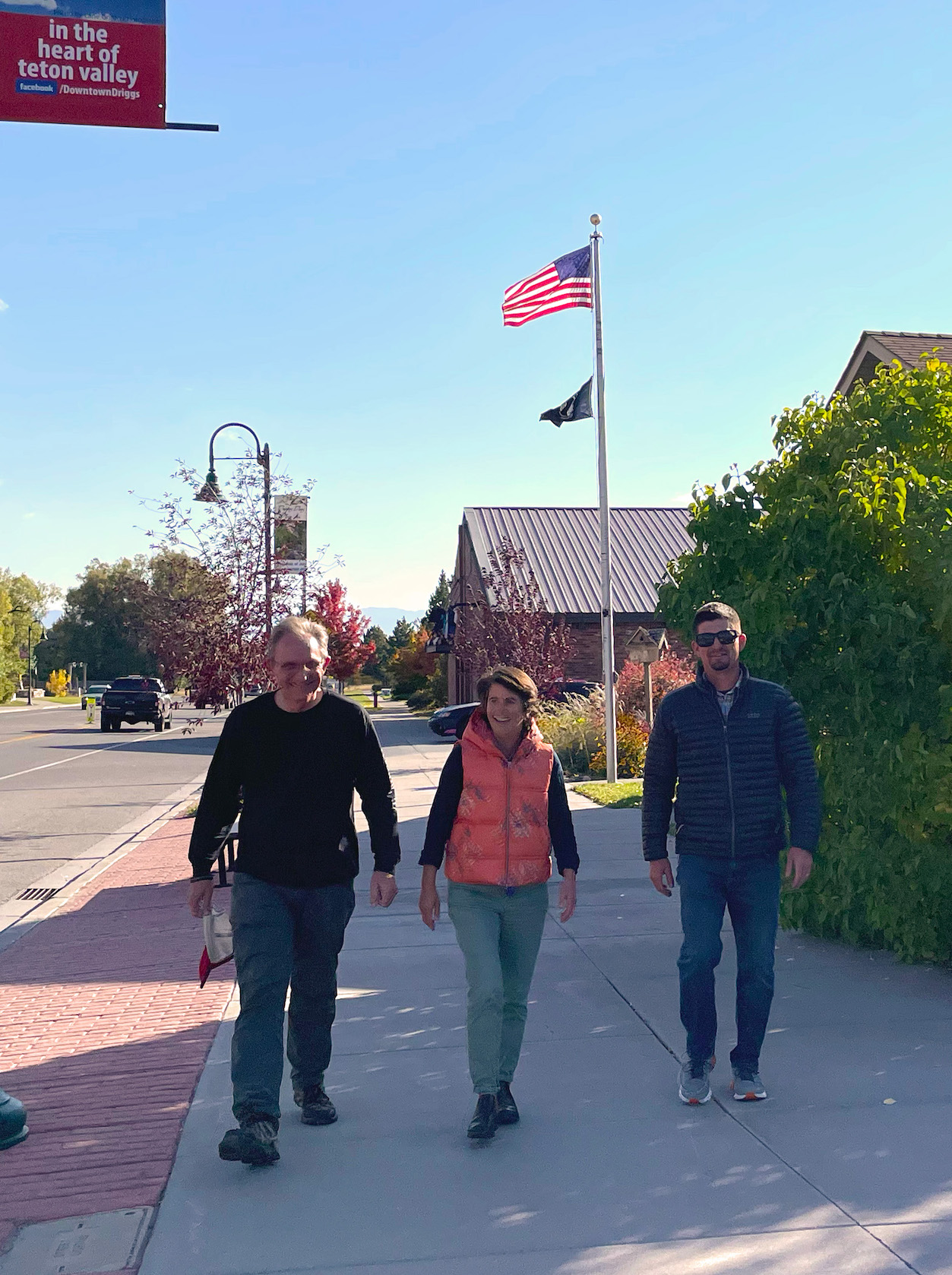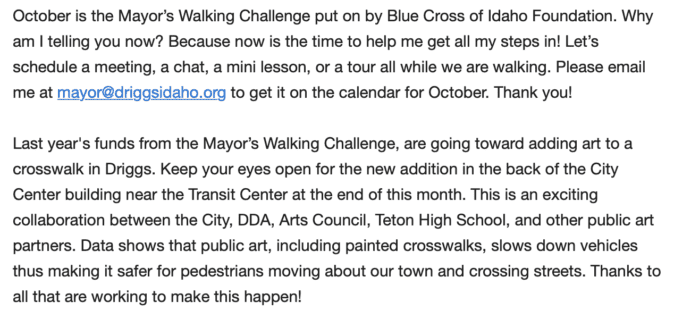The Mayor’s Walking Challenge gives every mayor in Idaho the opportunity to get moving and earn funds for their community — all while setting a great example by being physically active.
This is Year 10 of the Mayor’s Walking Challenge. The annual event has grown from a small event in 2014, when a small number of mayors in the Treasure Valley walked, to nearly 100 mayors across all of Idaho last year. As the challenge has grown, so has its impact.
Mayors can earn either $500 or $1,000 for walking each October, depending on the number of steps they walk. It might not seem like a lot of money for a city, but these funds make a huge difference in smaller, rural communities that don’t often have the resources and funding partners of larger cities. Most Idaho cities are small, rural communities.
We ask participating mayors how they spent the funds they’ve earned the previous year. Our team is always impressed by the thoughtfulness, creativity and even the promotion of the challenge.
Consider this excerpt from Driggs Mayor August Christensen’s monthly e-newsletter:
Mayor Christensen isn’t alone. Here are a few other examples of thinking outside the box:
Winchester Mayor Miriam Youngren has been walking since 2019, the year the Mayor’s Walking Challenge became a statewide event. Her earnings helped build a cement patio behind the city library that is used for classes and youth projects. The city also has initiated a community garden and funding will help “teach valuable lessons in sustainable food production.” She also asks members of her community for ideas to apply the earnings.
Providing youth access to outdoor recreation is another popular theme. Moscow Mayor Art Bettge and Kamiah Mayor Betty Heater use their earnings for pay for swimming pool passes for children who can’t afford to pay. Stanley Mayor Steve Botti’s earnings led to ski lessons for youth. Weston Mayor Greg Garner used the funds to pay for youth entry fees and T-shirts for a fun run.
Equipment purchases are another creative way to use funds in an impactful way. Hollister Mayor Robyn Grover purchased a refrigerator for an after-school program, while Placerville Mayor Brian Davies allocated funds to help purchase a snow blower for the city. Numerous mayors purchased PE equipment and playground equipment for parks and schools.
Many mayors put funds toward larger projects. Parma Mayor Angie Lee is adding her funds toward a splash pad project. Emmett Mayor Gordon Petrie used his funds over several years to help build a walking path at an elementary school. Lapwai Mayor Antonio Smith continues to save for an addition to the city’s skatepark. Bovill Mayor Diane Holt is saving to reseal asphalt and fix tennis and basketball courts in town. Clark Fork Mayor Russell Schenck and Potlatch Mayor David Brown have restroom projects in parks.
Walkability projects also are common and impactful. Roberts Mayor BJ Berlin uses funds each year toward sidewalk projects. Cascade Mayor Judith Nissula focuses on The Strand walking path in her city, while Pocatello Mayor Brian Blad put funds toward a connections trail. Heyburn Mayor Dick Galbraith purchased a bench in the city park, because having places to stop and rest, encourages walking.
As you can see, there are countless ways for mayors to spend $500 or $1,000 in an impactful way to benefit their communities.
Is your mayor walking? If so, how would you like he or she to spend any earnings? If your mayor isn’t walking, encourage them to do so. The Mayor’s Walking Challenge gives them a chance to do something that’s good for their own health — while helping their community.

